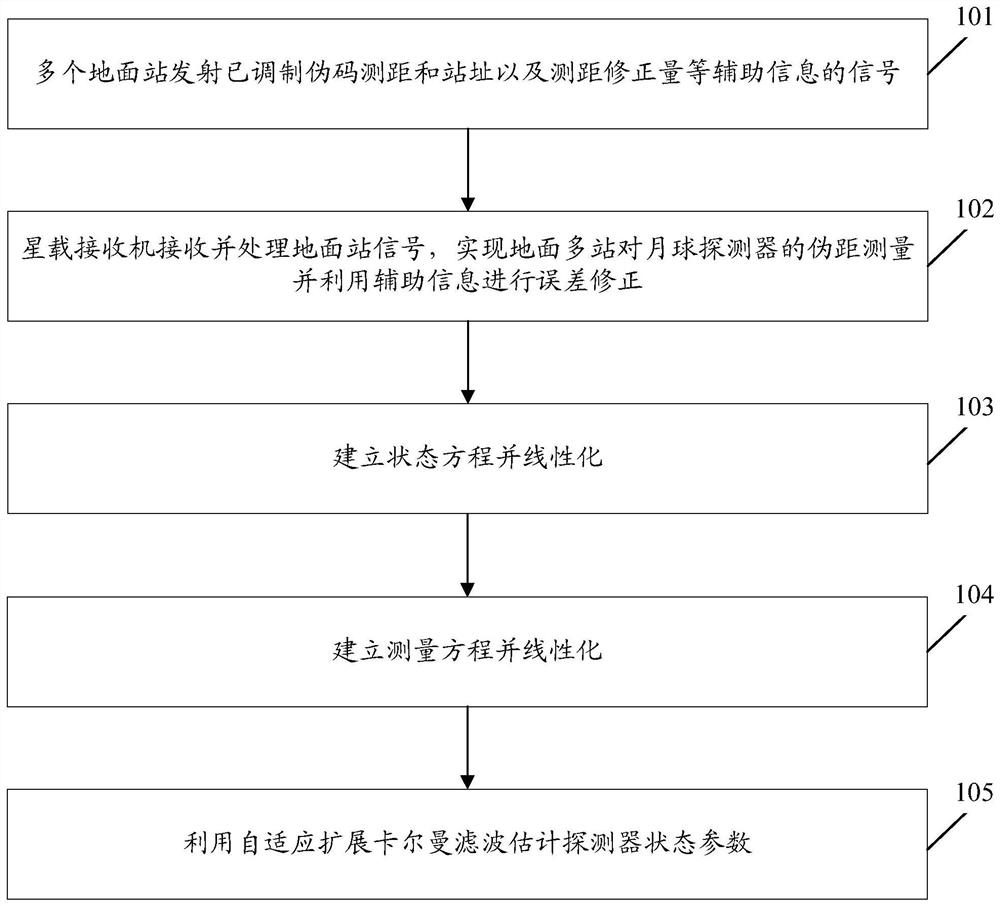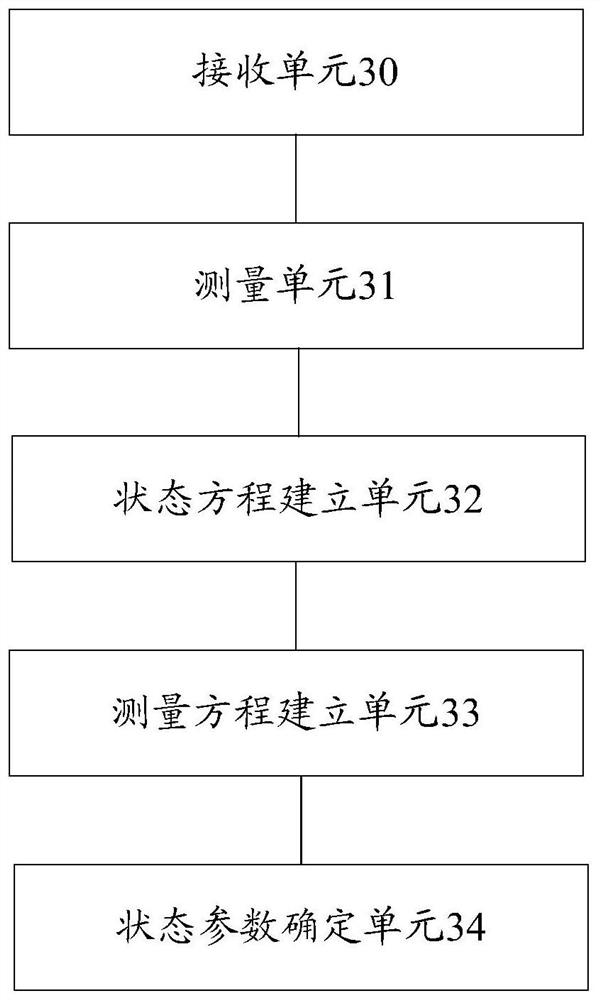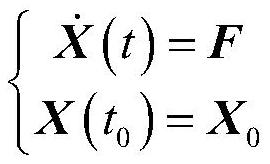Method and device for autonomous orbit determination of lunar probe
An autonomous orbit determination and detector technology, applied in the field of lunar and deep space measurement and navigation, can solve the problems of long distance of lunar probes and low received signal strength, achieve broad practical engineering application prospects and improve application capabilities
- Summary
- Abstract
- Description
- Claims
- Application Information
AI Technical Summary
Problems solved by technology
Method used
Image
Examples
Embodiment Construction
[0096] At present, the use of ground station measurement data does not support the autonomous orbit determination of the lunar probe, and when using the GNSS system to autonomously navigate the lunar probe, the spaceborne GNSS receiver must have the ability to capture and track weak signals. The embodiment of this application uses multiple The pseudo-range measurement of the ground station can be used for real-time autonomous orbit determination of the moon and other probes. Under the condition of the signal receiving ability of the existing near-Earth receiver, the pseudo-range measurement of multiple ground stations can be used to realize the orbit determination of the moon and other probes, improving the It has demonstrated the application capability of ground stations in real-time autonomous navigation of lunar and deep space probes, and has broad practical engineering application prospects.
[0097] The embodiment of the present application takes the lunar probe as an exam...
PUM
 Login to View More
Login to View More Abstract
Description
Claims
Application Information
 Login to View More
Login to View More - R&D
- Intellectual Property
- Life Sciences
- Materials
- Tech Scout
- Unparalleled Data Quality
- Higher Quality Content
- 60% Fewer Hallucinations
Browse by: Latest US Patents, China's latest patents, Technical Efficacy Thesaurus, Application Domain, Technology Topic, Popular Technical Reports.
© 2025 PatSnap. All rights reserved.Legal|Privacy policy|Modern Slavery Act Transparency Statement|Sitemap|About US| Contact US: help@patsnap.com



